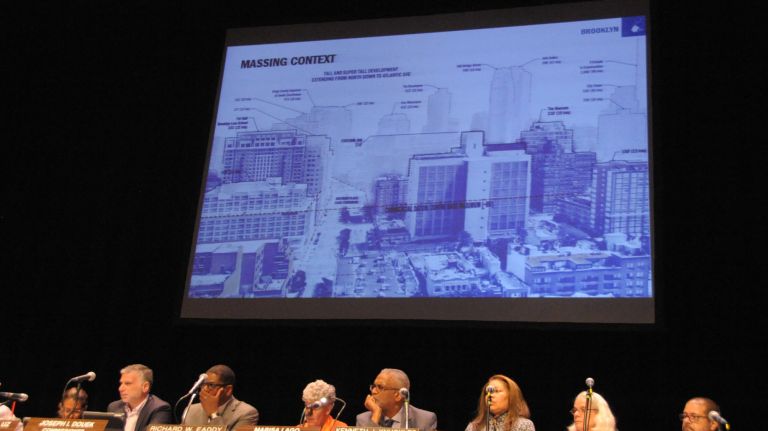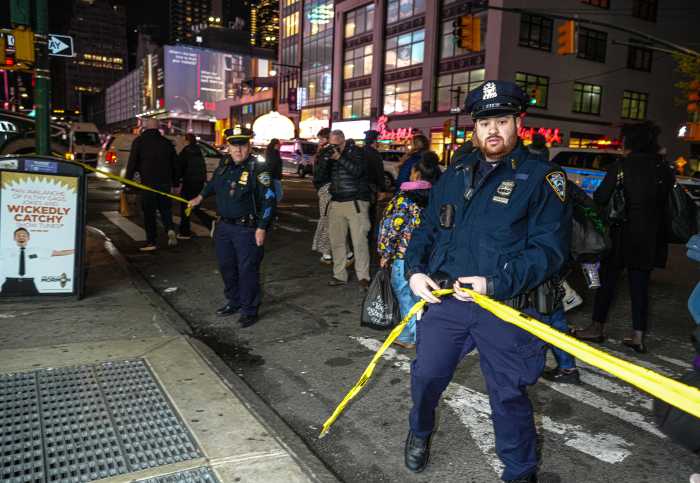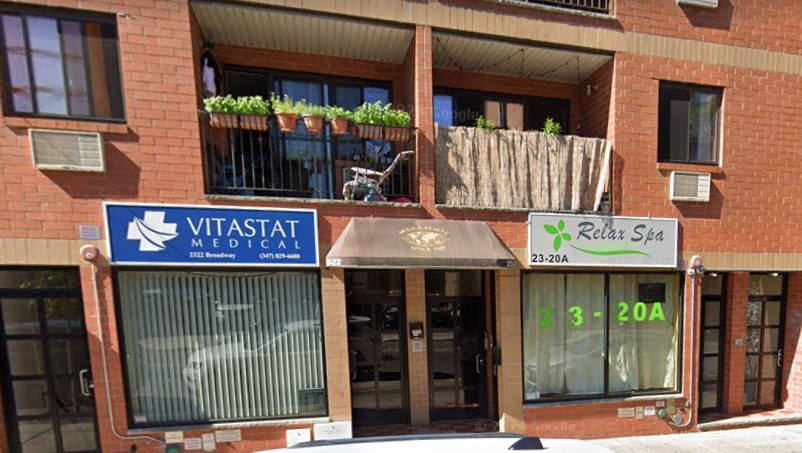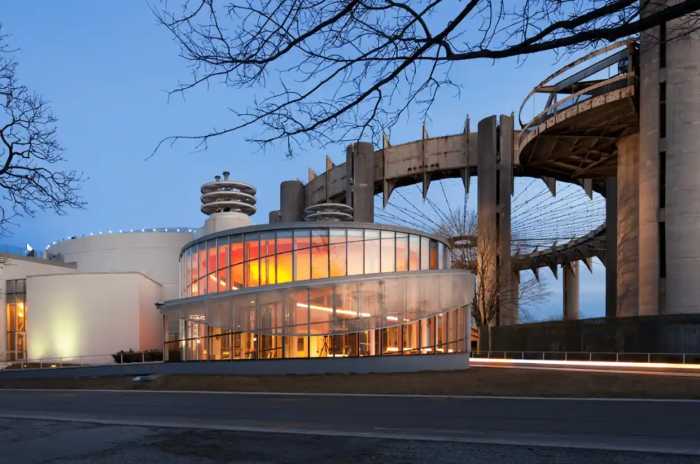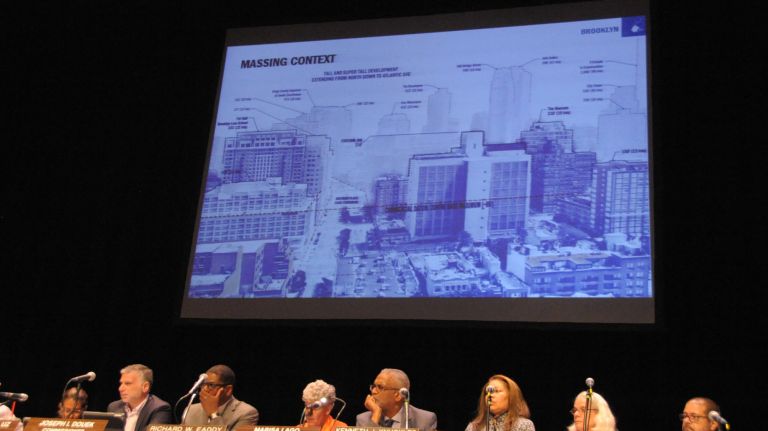
The City Planning Commission received at-times combative feedback at a Wednesday hearing on the jails expected to replace the Rikers Island detention complex — fielding impassioned pleas to expedite the proposals as well as cries of "murderer" directed at those considering the construction of any new detention facilities.
Wednesday’s hearing at the Gerald W. Lynch Theater at John Jay College in midtown opened with the Mayor’s Office of Criminal Justice leaders explaining how they had adjusted plans for four new, modern jails in each borough, except for Staten Island, where the city says the cost of opening and operating a jail is not justified by the size of the incarcerated population.
The Mayor’s Office of Criminal Justice needed time to assess how state bail and other reforms would reduce the incarcerated population, now expected to eventually fall to 4,000, and the amount of space needed to shelter those prisoners, according to Dana Kaplan, deputy director of close Rikers and justice initiatives. Each jail will now need to accommodate 1,150 beds, rather than the 1,437 previously proposed, Kaplan said.
Kaplan committed to presenting more specifics about how dramatically the size of each facility could be parred down, while factoring in commitments to nix an arraignment court next to the Bronx detention center, to include a women’s ward in Queens and to decentralize specialized medical care so it is available at each location.
"We’ll be able to update you on what we estimate the new maximum envelope will be before the commission votes," said Kaplan, referring to the roughly two months the commission has to vote on plans to replace the detention facilities in Queens, Brooklyn and Manhattan with more modern ones and to construct a new jail where a NYPD tow pound now operates in Mott Haven.
Dozens who addressed the commissioners supported the goal of closing the notoriously violent jails on Rikers by 2026, but speakers took issue with the new jails’ proposed size and location, particularly in the Bronx, where the targeted location is two miles from court and the centerpiece of an alternative redevelopment vision.
But some among the roughly 130 people packed into the auditorium for hours argued against spending any of the $8.7 billion initially budgeted on detention facilities, calling for alternative incarceration prevention investments. Attendees waved signs reading, "no more jails," and shouted, "You have blood on your hands," "Murderer," and, "If they build it, they will fill it."
Proponents of moving jails closer to inmates’ homes and courts say that should help cases proceed more quickly. The new jails will also be designed to provide guards with better observation angles and to limit how frequently they must usher inmates through the halls for various activities, according to city officials.
Criminal justice reform advocates have long pushed the administration toward shuttering Rikers. The city settled a lawsuit in 2015 brought by detainees and joined by former U.S. Attorney Preet Bharara’s office, which found male, adolescents there are not protected from one another or from staff’s excessive use of force and solitary confinement.
The city has worked to bring down the average daily jail population from 9,400 in June 2017 to less than 8,000 by the end of 2018, according to city planning documents. Most of those on Rikers Island are waiting for their cases to be adjudicated in court.
After her experience on Rikers Island, Tamika Graham, 40, said she wanted to work with the City Council to include more funding for alternatives to incarceration and treatment for mental health care in the mayor’s plan.
"Rikers is not an environment fit for any human being," said Graham, a Staten Island resident who was incarcerated at 16. "Moving quickly with this approval process is the right thing to do to match the urgency of the human rights crisis on Rikers Island."
But Rona Love, 58, who was recently released, said it would be wiser to nix the new jails and put the funding toward housing and health care.
"This is where the money should go to better help us, not to keep abusing us in prison and then throwing us in the street with no help. And then you wonder why we do what we do when we come out?" said Love.
The commissioners also heard from New Yorkers who contended that the jails, as currently envisioned, would disrupt their neighborhoods. The facilities have not gained the approval of any of the local community boards, which conduct advisory votes on local development.
In the Bronx, those living near the tow pound filed a petition in March challenging the city’s decision to combine all of the proposed detention facilities in one application.
The Diego Beekman Mutual Housing Association, which has some 1,200 apartments, and the larger Mott Haven community had planned to construct affordable housing, a manufacturing hub and a supermarket where the city foresees the jail rising, according to Arline Parks, the vice chair and CEO of the association.
"We lost generations of our youth because of the city’s disinvestment in that neighborhood … for over 40 years, families and their children entrenched in crime, drug culture, and no outsider could have came in and did what we did," Parks said. "I’m here today on behalf of my neighborhood to speak against the proposed jail, a project that would shamefully create more inequity."
Kaplan said the city examined dozens of sites in the Bronx, but those closer to the courts were not large enough to support contemporary design standards for jails.



